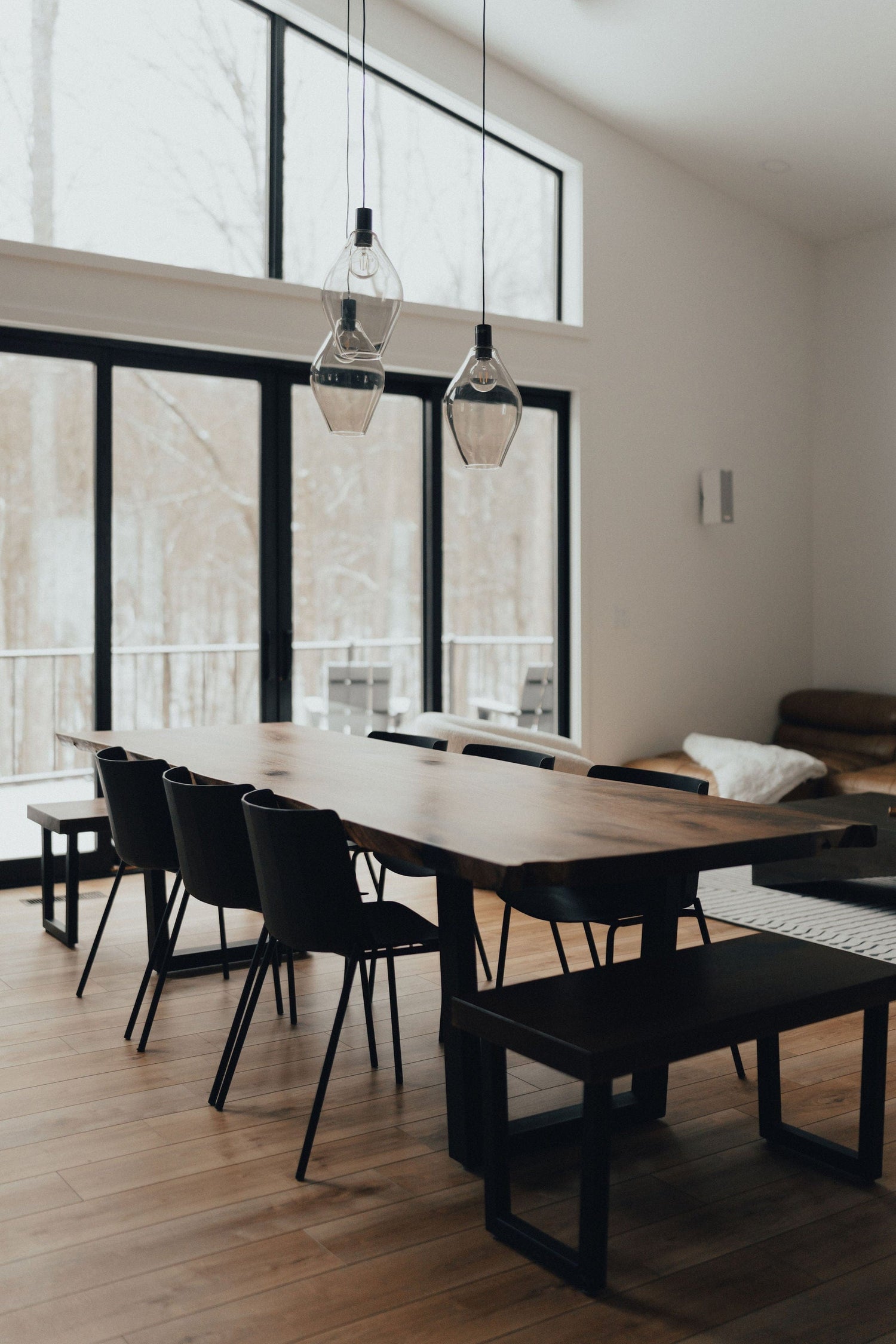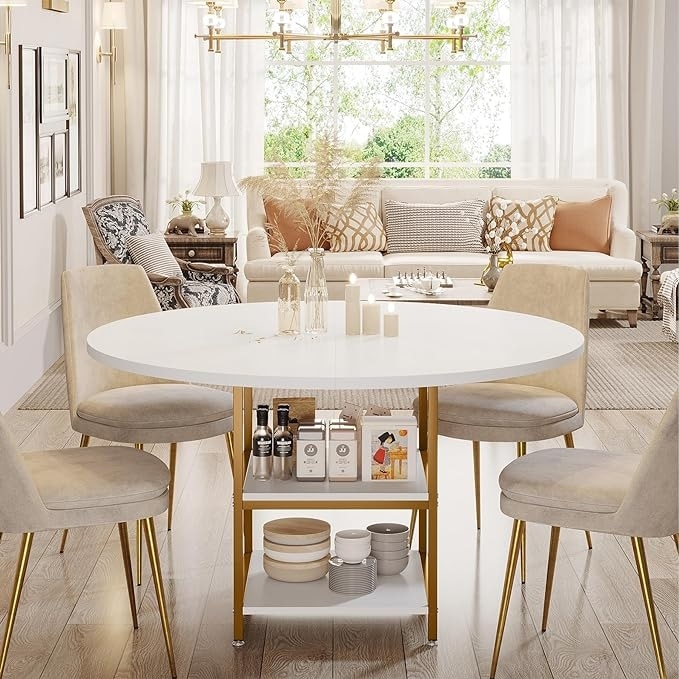Why Custom Dining Room Table Legs Are Worth the Investment
Why Custom Dining Room Table Legs Are Worth the Investment
Blog Article
From Conventional to Modern: Discover the Ideal Dining-room Table Legs for Your Design
The selection of eating space table legs plays a critical role in defining the general character of your space, bridging the space in between typical workmanship and modern visual appeals. While timeless styles such as cabriole and transformed legs evoke a sense of ageless sophistication, contemporary styles like barrette and geometric options present an opportunity for striking visual interest. Examining the ideal balance in between these styles requires a nuanced understanding of your existing design and individual taste. As you take into consideration these elements, the inquiry continues to be: just how can you seamlessly incorporate these varied leg styles to develop an unified dining experience?
Understanding Table Leg Styles
The range of dining room table leg styles can significantly influence both the appearances and performance of the room. Each leg design adds one-of-a-kind aesthetic aspects and useful features, satisfying varied layout choices and usage requirements. Recognizing these designs is important for picking the ideal dining table that straightens with your overall interior design vision.
For example, conical legs supply a clean, traditional look that can enhance a room's sophistication, while stand bases supply security and make best use of legroom, making them optimal for smaller spaces. Barrette legs, a trademark of mid-century modern-day design, introduce a commercial flair, permitting for a ventilated, open feeling. Similarly, trestle legs evoke rustic beauty, providing robust support and a sense of timelessness.
Wooden legs can bring heat and texture, whereas steel alternatives typically convey a smooth, contemporary ambiance. Ultimately, recognizing table leg styles is necessary for producing a natural eating area that reflects personal style while ensuring usefulness and comfort.
Conventional Table Leg Options
When picking eating room table legs, standard choices frequently embody ageless elegance and workmanship. These designs mirror an abundant heritage and a dedication to top quality, making them perfect for those that appreciate traditional aesthetic appeals.
One of one of the most famous typical leg styles is the cabriole leg, defined by its elegant bent form. This style usually includes ornamental makings and is most typically located in Queen Anne and Chippendale furniture. Another popular alternative is the turned leg, which flaunts a collection of smooth, rounded forms that give a traditional look while maintaining stability.
Moreover, the straight leg, while simple, supplies a unadorned and sturdy framework that can blend seamlessly with a selection of tabletop styles. For those attracted to ornate outlining, claw-and-ball feet legs evoke a sense of splendour and can serve as a sensational centerpiece in any kind of eating room.
Finally, pedestal bases, although not strictly legs, supply an alternative typical alternative that permits sufficient legroom and can be beautifully sculpted. Each of these conventional leg designs contributes to the total atmosphere of a dining-room, weding function with aesthetic appeal.

Modern Table Leg Layouts
Modern table leg layouts provide a varied array of styles that emphasize ingenious products and tidy lines. These layouts usually prioritize capability while functioning as striking centerpieces within an eating space. Minimalist appearances prevail, with legs crafted from products such as steel, glass, and engineered wood, which add to a contemporary and ventilated feel.
One popular design is the barrette leg, identified by its slender, tapered structure that gives stability without frustrating the table top (dining room table legs). This style is commonly located in mid-century modern furniture and can effortlessly enhance numerous table forms. Another trend is the use of geometric shapes, where legs might take on angular or asymmetrical kinds, adding aesthetic rate of interest and a touch of virtuosity

Blending Designs for One-of-a-kind Rooms
Typically, home owners look for to create unique eating rooms that show their individual design by mixing various design aspects. This Look At This strategy permits the consolidation of varied appearances, leading to an unified yet distinctive setting. Matching a rustic wooden table with smooth, contemporary metal legs can create a distinctive comparison that elevates the room's total charm.
In addition, integrating vintage table legs with contemporary table tops can stimulate a feeling of history while maintaining a modern perceptiveness. Such mixes not only display specific taste but also encourage creative thinking, enabling home owners to curate an area that feels both individual and welcoming.
Shade plays a critical role in this mixing process; picking table legs that enhance or contrast with the existing shade system can improve visual interest. For instance, whitewashed legs can soften the boldness of a dark table surface, creating a well balanced visual.
Tips for Selecting the Right Legs
Choosing the right table legs is crucial for accomplishing both capability and aesthetic charm in your dining room. Begin by taking into consideration the general style of your room. Typical settings take advantage of legs that feature complex carvings or transformed designs, while modern areas might call for smooth, minimalist designs.
Next, evaluate the elevation and security of the legs. dining room table legs. Typical table vary in between 28 to 30 inches in height, so make sure the legs match this measurement for comfort. Additionally, robust products, such as wood or steel, can boost security and longevity
Evaluate the leg shape too-- alternatives include directly, tapered, or stand layouts. Straight legs supply a classic appearance, while conical legs can add a touch of sophistication. Pedestal bases supply adequate legroom and are perfect for smaller areas.
Final Thought
In recap, picking the suitable dining-room table legs calls for careful factor to consider of both modern and traditional styles. Traditional choices such as cabriole and turned legs offer timeless style, while modern-day styles like hairpin and geometric forms offer a modern touch. By balancing leg design, height, and material with the general décor, a cohesive and welcoming ambience can be accomplished. Ultimately, the selected table legs my link ought to reflect the desired aesthetic, boosting the dining experience within the room.
The range of dining space table leg styles can dramatically affect both the aesthetics and functionality of the area. Inevitably, understanding table leg designs is necessary for developing a natural eating location that reflects individual design while guaranteeing usefulness and comfort.One of the most renowned traditional leg styles is the cabriole leg, characterized by its elegant bent form. Straight legs provide a timeless appearance, while conical legs click here to find out more can add a touch of style.In recap, selecting the ideal dining area table legs requires careful consideration of both contemporary and traditional styles.
Report this page